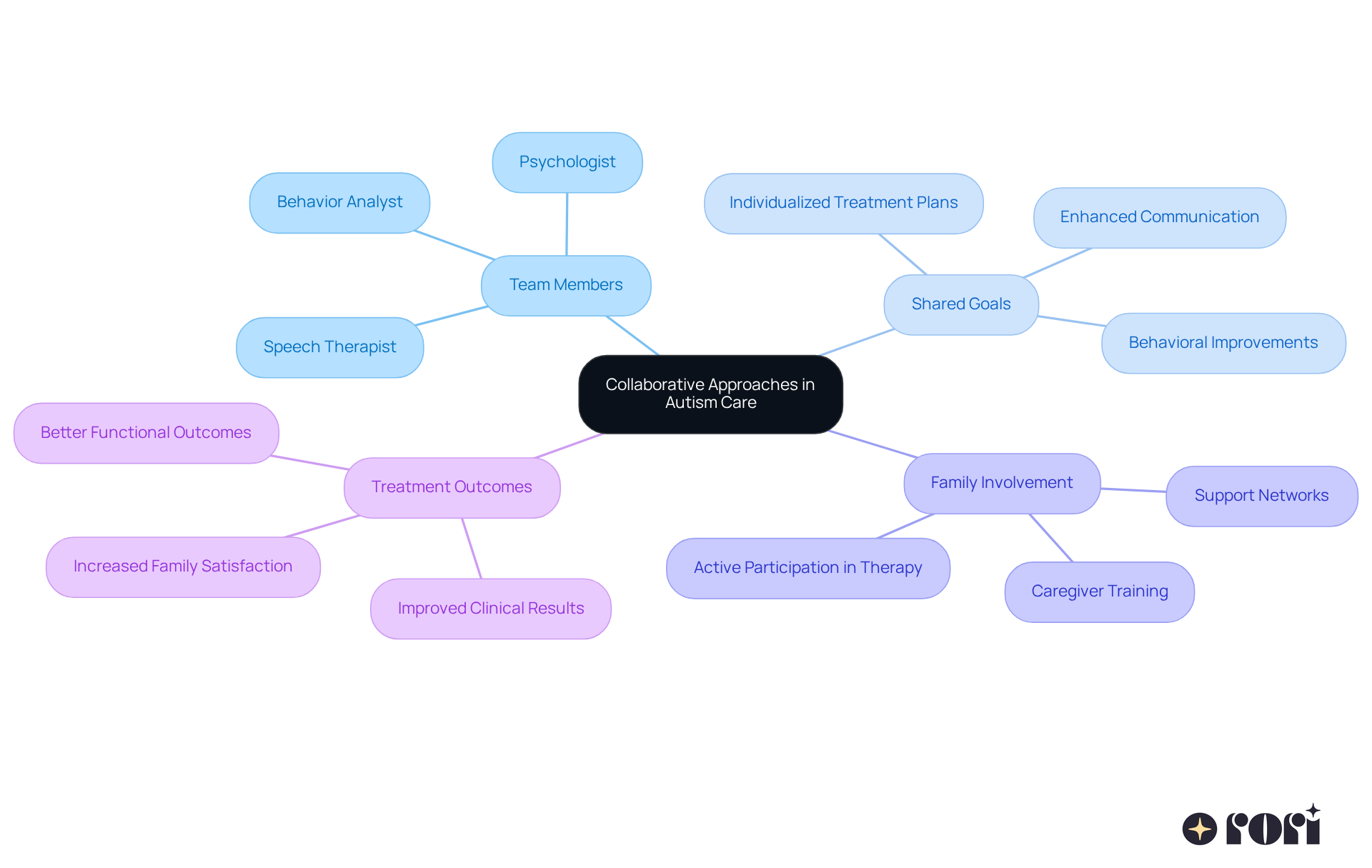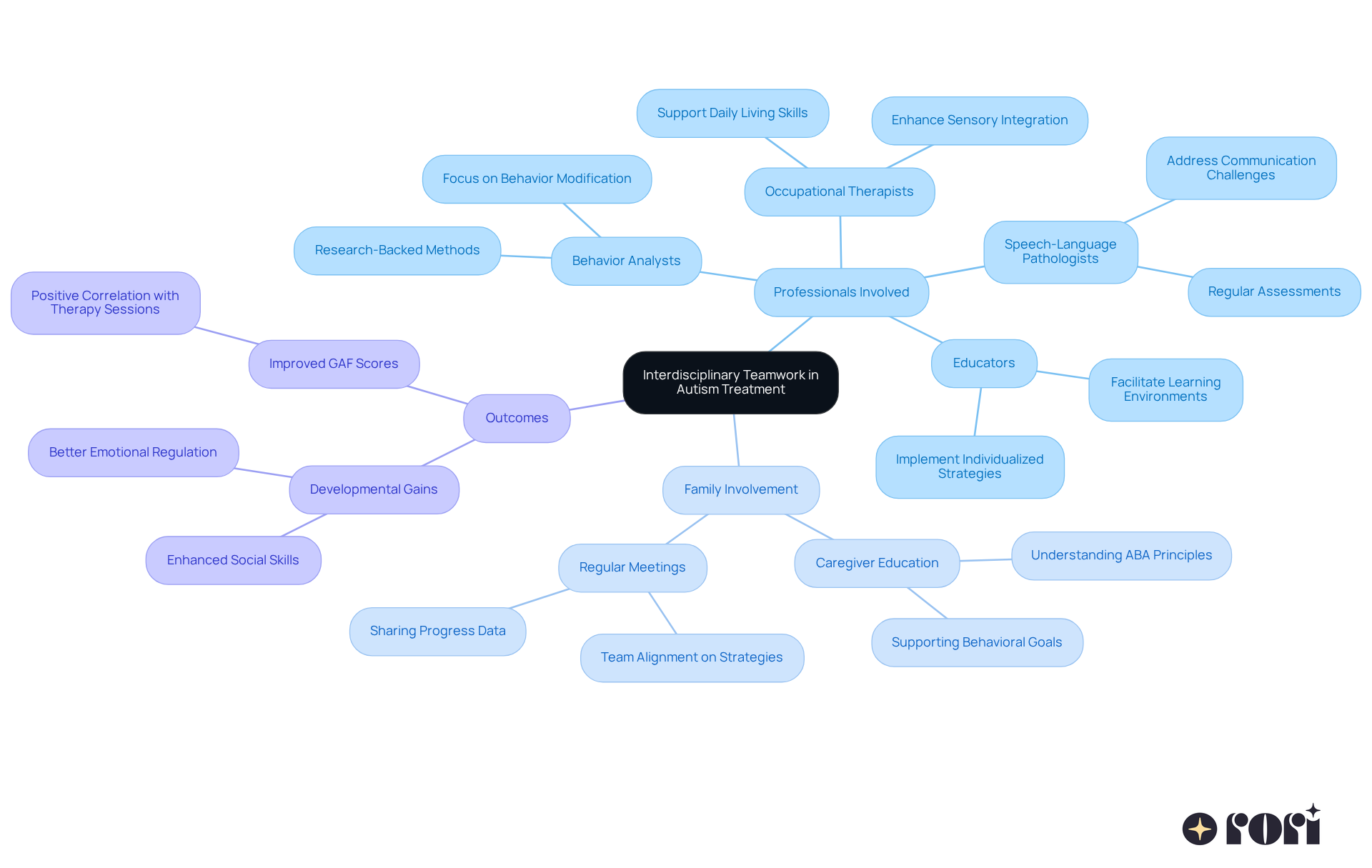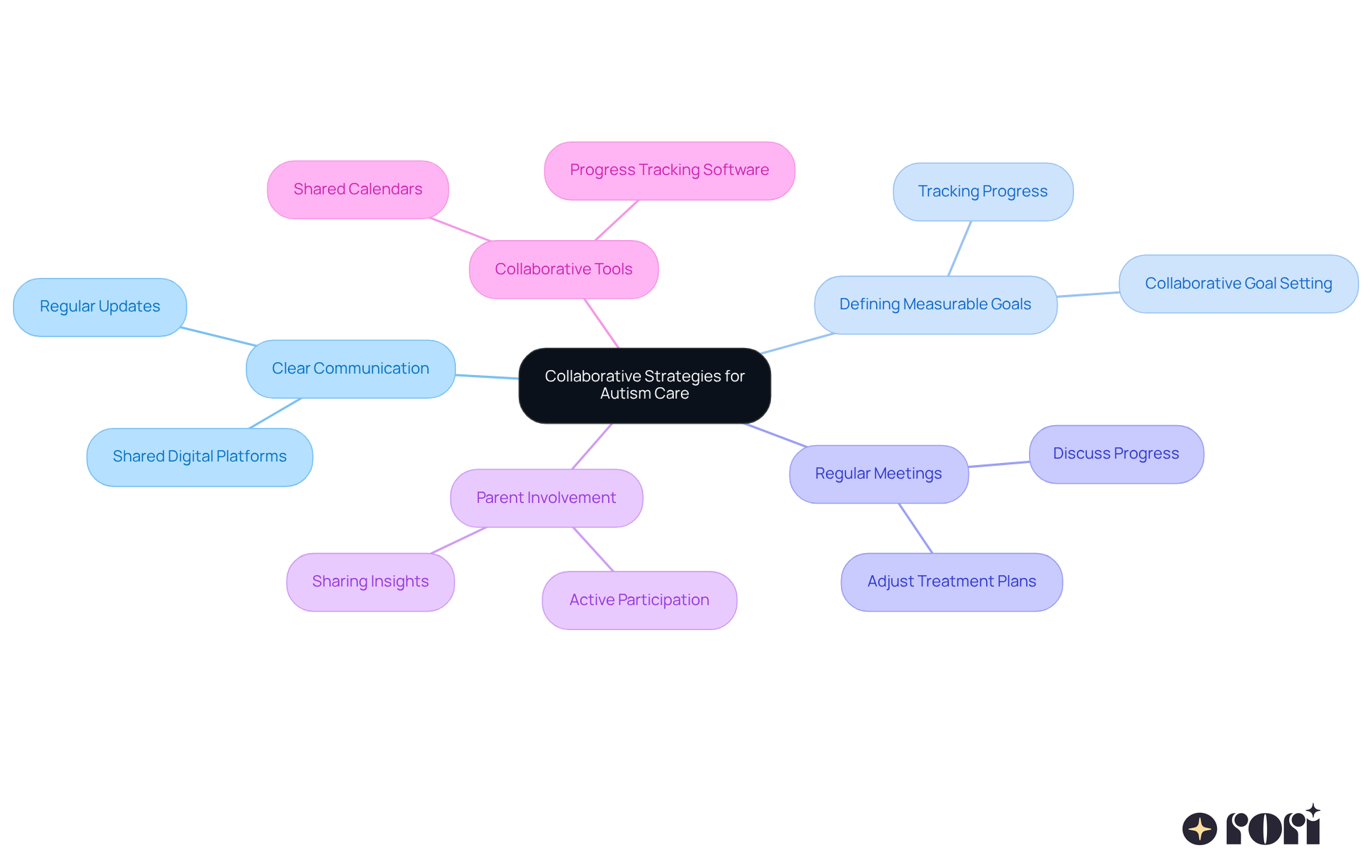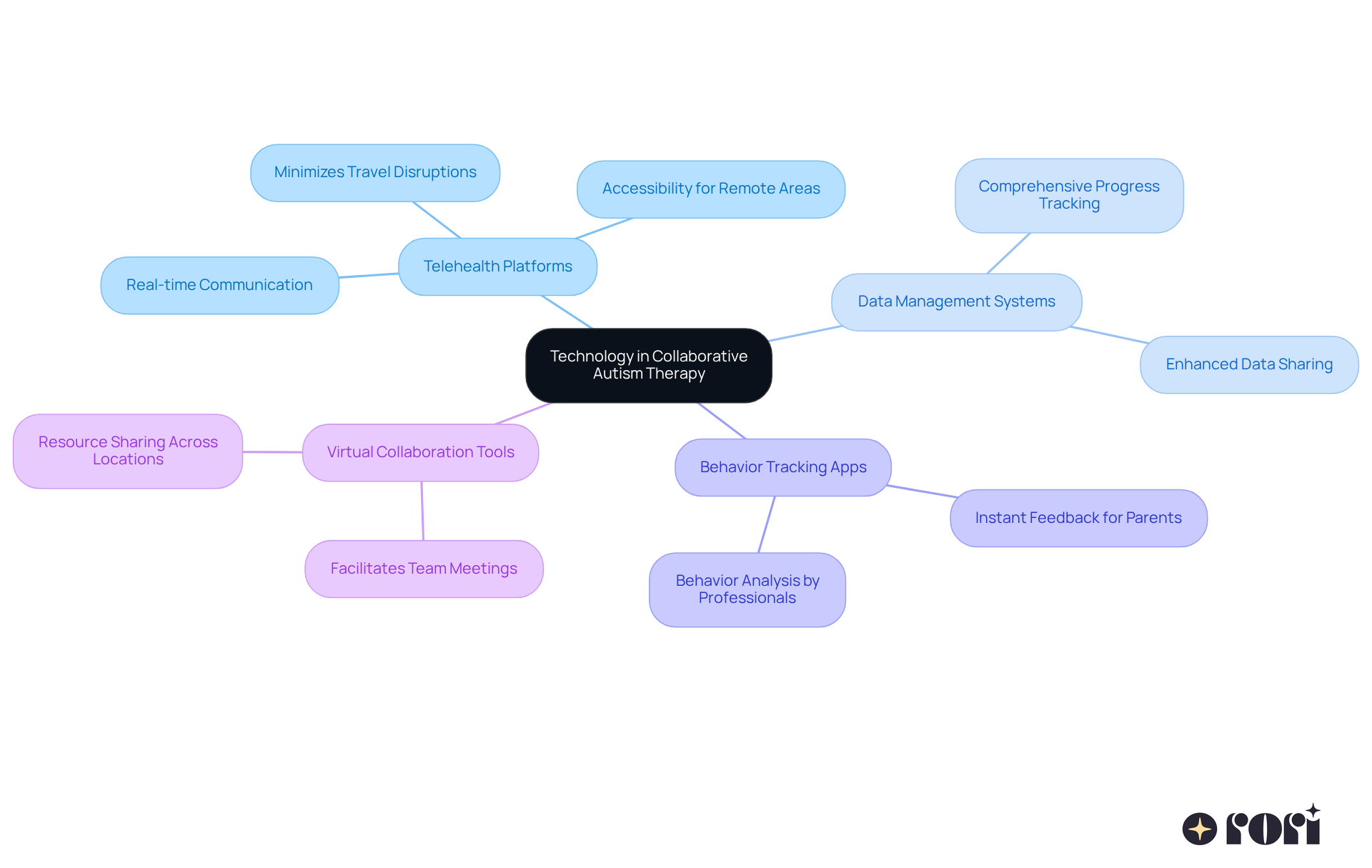Navigating autism care can feel overwhelming, can’t it? It’s a journey that requires a thoughtful approach, where teamwork among therapists, educators, and medical professionals can truly make a difference. When these experts come together, they can create a personalized treatment plan that not only addresses the unique needs of each child but also fosters a sense of shared goals and respect.
But what about families? How can you get involved in this collaborative journey? It’s essential to ensure that every voice is heard, including yours! By exploring these questions, we can uncover the incredible impact of teamwork in autism care. Together, we can find insights that lead to better developmental outcomes for our children. Let’s explore this together!
Collaborative methods in caring for developmental disorders bring together a team of professionals - think therapists, educators, and medical practitioners - all working together to create a treatment plan that’s just right for each individual. This collaborative approach for children with autism emphasizes shared goals, open conversations, and mutual respect, creating a space where everyone’s expertise comes together to tackle the unique challenges faced by individuals with autism.
Imagine a team that includes a behavior analyst, a speech therapist, and a psychologist. Each one brings valuable insights to the table, helping to shape a comprehensive treatment plan. Research shows that this kind of teamwork can really boost treatment outcomes. In fact, studies reveal that family-centered approaches lead to better clinical and functional results. When families get involved, the outcomes tend to be more positive, highlighting just how crucial caregivers are in the therapeutic journey.
At Rori Care, we offer services like caregiver training and personal therapy, equipping caregivers with the tools and knowledge they need to support their loved ones’ behavioral goals. As one expert wisely said, "Family participation should be prioritized as a key component of successful long-term intervention outcomes." This collaborative approach for children with autism not only meets the immediate needs of young people but also fosters their overall development in various areas, ensuring a well-rounded care strategy.
And let’s not forget what Dr. Cathy Pratt shared: "The young individual or adult with this condition is primarily a person - one who experiences love, pain, joy, and sorrow." So, let’s explore this together! We’re here to help you every step of the way!

Interdisciplinary teamwork in autism treatment is so important for helping young people grow! It brings together professionals like behavior analysts, occupational therapists, speech-language pathologists, and educators, each with their own special skills. This collaboration creates a well-rounded understanding of what each individual needs. For instance, behavior analysts focus on behavior modification, using research-backed methods to ensure effective interventions. Meanwhile, speech-language pathologists tackle communication challenges, and regular assessments help keep everything on track with the child’s progress and goals.
Research shows that when families get involved, the outcomes of interventions improve significantly. Regular team meetings and shared documentation are key to keeping everyone aligned on strategies and goals. This teamwork really pays off for the youth, as seen in the positive link between the number of therapy sessions and Global Assessment of Functioning (GAF) scores (p = 0.019). Plus, when caregivers learn about ABA principles, they become better equipped to support their child’s behavioral goals, leading to improved outcomes and informed choices.
As Aline Kabarite wisely points out, "Greater family involvement led to better outcomes, highlighting the importance of caregiver involvement in intervention." This collaborative approach for children with autism truly fosters developmental gains, even though there are challenges, such as the fact that 67% of behavioral professionals haven’t taken collaboration courses in college. By actively involving families in their child’s therapy journey, we can create a more effective and supportive environment for growth. Let’s explore this together!

When it comes to autism care, implementing effective strategies through a collaborative approach for children with autism can make a world of difference! Here are some key practices that can really help:
Establish Clear Communication: Keeping the lines of communication open among group members is so important. Using shared digital platforms for updates and documentation helps everyone stay informed and on the same page.
It’s essential to use a collaborative approach for children with autism to define clear, measurable goals for your child’s development. This way, everyone is working towards the same objectives, which boosts the effectiveness of interventions.
Schedule Regular Meetings: Frequent team meetings are a great way to discuss progress, challenges, and any necessary adjustments to the treatment plan. This proactive approach to care really fosters teamwork!
Encourage Parent Involvement: Engaging parents as active participants in the care process is crucial. Your insights and experiences provide valuable context that can shape treatment strategies. Plus, data shows that parental engagement significantly improves treatment outcomes for developmental disorders, leading to better results for our kids!
Utilize Collaborative Tools: Implementing technology that makes collaboration easier - like shared calendars, communication apps, and progress tracking software - can really streamline processes and enhance coordination among group members.
These strategies not only improve collaboration but also promote a collaborative approach for children with autism, resulting in more efficient and tailored support for young individuals with developmental disorders. Ultimately, they foster growth and wellness, helping our kids thrive! Let’s explore this together!

The collaborative approach for children with autism, which utilizes technology, can really enhance communication and teamwork among everyone involved. Telehealth platforms make it easy for professionals to connect in real-time, sharing updates and insights without missing a beat. Imagine being able to track a young person's progress across different therapies with just a few clicks! Data management systems help create a complete picture of their development.
For instance, specialized apps for behavior tracking allow behavior analysts and parents to keep an eye on specific behaviors and share their thoughts instantly. This fosters a collaborative approach for children with autism, ensuring an environment where everyone feels included. Plus, virtual collaboration tools let teams hold meetings and share resources no matter where they are, making care more accessible for everyone.
Bringing technology into teamwork not only boosts efficiency but also enhances communication, leading to better support for individuals with developmental disorders. Did you know that over 30 states now require insurers to cover telehealth services? This shows just how important it is becoming in the world of developmental disorder care.
Research has also shown that telehealth can significantly improve family involvement, which in turn leads to better behavioral outcomes for children. As telehealth continues to grow, its role in enhancing collaboration among autism care teams through a collaborative approach for children with autism will be crucial for delivering effective and personalized treatment. Let’s explore this together and see how these advancements can make a difference!

The collaborative approach for children with autism is truly a game-changer! It highlights how essential teamwork is among professionals and families. By bringing together the skills of behavior analysts, therapists, and caregivers, we can create a treatment plan that’s just right for each child. This tailored approach not only leads to better outcomes but also nurtures their overall development.
Throughout this article, we’ve seen how vital interdisciplinary teamwork is in autism treatment. Think about it: clear communication, measurable goals, and actively involving parents in the process are key strategies that really boost collaboration. Plus, with technology like telehealth platforms and behavior tracking apps, staying connected and informed about a child’s progress has never been easier!
Reflecting on these collaborative practices, it’s clear that building a strong support network benefits not just children with autism but also empowers families and professionals. Embracing this teamwork approach is crucial for creating an environment where everyone can thrive. So, let’s make it a priority to work together in autism care, ensuring that every child gets the personalized support they deserve on their journey to growth and development. We’re here to help you every step of the way!
What are collaborative approaches in autism care?
Collaborative approaches in autism care involve a team of professionals, such as therapists, educators, and medical practitioners, working together to create a personalized treatment plan for individuals with autism.
What is emphasized in the collaborative approach for children with autism?
The collaborative approach emphasizes shared goals, open conversations, and mutual respect among team members, allowing their expertise to collectively address the unique challenges faced by individuals with autism.
Who might be included in a collaborative team for autism care?
A collaborative team may include a behavior analyst, a speech therapist, and a psychologist, each contributing valuable insights to develop a comprehensive treatment plan.
What are the benefits of family involvement in autism care?
Research shows that family-centered approaches lead to better clinical and functional results. When families are involved, the outcomes tend to be more positive, highlighting the importance of caregivers in the therapeutic process.
What services does Rori Care offer to support caregivers?
Rori Care offers services such as caregiver training and personal therapy, providing caregivers with the tools and knowledge needed to support their loved ones’ behavioral goals.
Why is family participation considered crucial in autism intervention?
Family participation is prioritized as a key component of successful long-term intervention outcomes, as it enhances the effectiveness of the treatment and supports the individual's overall development.
What is the broader perspective on individuals with autism, according to Dr. Cathy Pratt?
Dr. Cathy Pratt emphasizes that individuals with autism are primarily people who experience a range of emotions such as love, pain, joy, and sorrow, highlighting their humanity beyond the diagnosis.